
Sabine National Wildlife Refuge: A Haven for Nature Lovers
Explore the natural beauty and diverse wildlife of Sabine National Wildlife Refuge, a sprawling sanctuary in southwest Louisiana perfect for nature enthusiasts and birdwatchers.
Sabine National Wildlife Refuge, located in southwest Louisiana, is a true gem for anyone who loves nature and wildlife. Spanning over 125,000 acres, this refuge offers a unique glimpse into the diverse ecosystems of coastal marshes. Established in 1937, it is one of the largest coastal marsh refuges in the United States, providing a vital habitat for a wide variety of species. Visitors can explore the refuge through several trails and observation points that offer stunning views of the marshlands. The Wetland Walkway is a popular choice, featuring a 1.5-mile boardwalk that meanders through the marsh, allowing for close-up views of alligators, migratory birds, and native plants. The refuge is also a prime spot for fishing and crabbing, with numerous spots designated for these activities. Birdwatchers will be delighted by the abundance of avian species, especially during the migration seasons. The refuge is home to over 280 species of birds, making it a must-visit for ornithologists and casual birdwatchers alike. Be sure to bring your binoculars and camera to capture the vibrant birdlife and breathtaking landscapes. For those who prefer a more leisurely visit, the Sabine National Wildlife Refuge Visitor Center provides educational exhibits and information about the local wildlife and conservation efforts. The center also offers guided tours and educational programs, making it a great starting point for your adventure in the refuge.
Local tips in Sabine National Wildlife Refuge
- Wear comfortable walking shoes and bring insect repellent for a more pleasant experience on the trails.
- Visit during early morning or late afternoon for the best chances to see wildlife, especially birds and alligators.
- Bring binoculars and a camera with a good zoom lens for birdwatching and wildlife photography.
- Check the weather forecast before your trip, as heavy rains can make some areas of the refuge inaccessible.
- Stop by the Visitor Center for maps, educational exhibits, and information on guided tours.
Sabine National Wildlife Refuge: A Haven for Nature Lovers
Sabine National Wildlife Refuge, located in southwest Louisiana, is a true gem for anyone who loves nature and wildlife. Spanning over 125,000 acres, this refuge offers a unique glimpse into the diverse ecosystems of coastal marshes. Established in 1937, it is one of the largest coastal marsh refuges in the United States, providing a vital habitat for a wide variety of species. Visitors can explore the refuge through several trails and observation points that offer stunning views of the marshlands. The Wetland Walkway is a popular choice, featuring a 1.5-mile boardwalk that meanders through the marsh, allowing for close-up views of alligators, migratory birds, and native plants. The refuge is also a prime spot for fishing and crabbing, with numerous spots designated for these activities. Birdwatchers will be delighted by the abundance of avian species, especially during the migration seasons. The refuge is home to over 280 species of birds, making it a must-visit for ornithologists and casual birdwatchers alike. Be sure to bring your binoculars and camera to capture the vibrant birdlife and breathtaking landscapes. For those who prefer a more leisurely visit, the Sabine National Wildlife Refuge Visitor Center provides educational exhibits and information about the local wildlife and conservation efforts. The center also offers guided tours and educational programs, making it a great starting point for your adventure in the refuge.
When is the best time to go to Sabine National Wildlife Refuge?
Iconic landmarks you can’t miss
Big Branch Marsh National Wildlife Refuge
Explore the breathtaking landscapes and diverse wildlife at Big Branch Marsh National Wildlife Refuge, a serene escape in Louisiana's natural beauty.

Sabine National Wildlife Refuge Admin Building And Visitor Contact Station
Discover the diverse ecosystems of Sabine National Wildlife Refuge, a serene natural preserve in Cameron, Louisiana, perfect for wildlife enthusiasts and nature lovers.

Unmissable attractions to see
Global Wildlife Center
Discover the Global Wildlife Center: A premier wildlife refuge and safari park in Louisiana, showcasing exotic animals and promoting conservation.
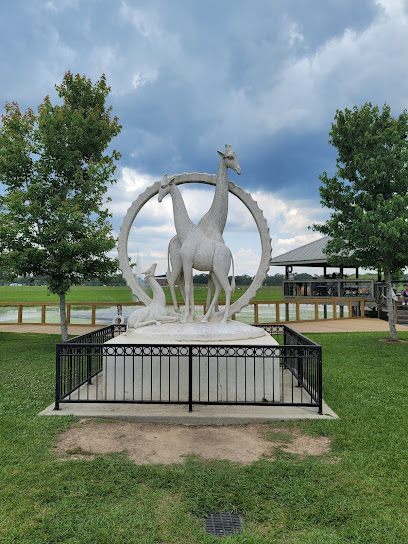
Sabine National Forest
Explore the vast landscapes and serene waters of Sabine National Forest, where adventure and tranquility harmoniously coexist in the heart of Texas.

Maurepas Swamp Wildlife Management Area
Experience the remarkable biodiversity of Maurepas Swamp Wildlife Management Area, a wildlife refuge offering unforgettable outdoor adventures in Louisiana.

Bayou Sauvage Urban National Wildlife Refuge
Explore the serene landscapes and diverse wildlife at Bayou Sauvage Urban National Wildlife Refuge, a natural retreat near New Orleans.

Kliebert & Son’s Gator Tours
Discover the wild side of Louisiana at Kliebert & Son's Gator Tours, where unforgettable wildlife encounters await.

Sam Houston Jones State Park
Discover the breathtaking beauty and outdoor adventures waiting for you at Sam Houston Jones State Park in Lake Charles, Louisiana.
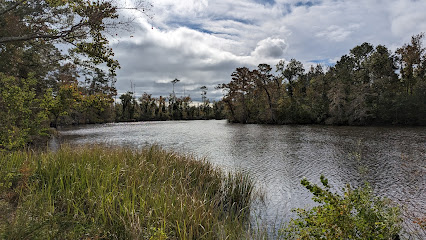
South Toledo Bend State Park
Experience the serene beauty of South Toledo Bend State Park, a haven for outdoor adventures, fishing, and camping in the heart of Louisiana.
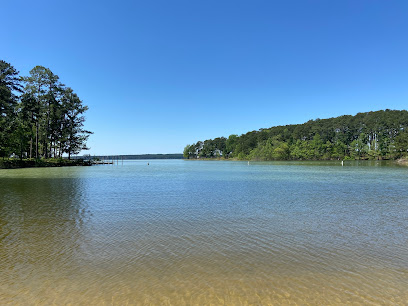
Cypremort Point State Park
Explore Cypremort Point State Park, a natural haven in Louisiana featuring beautiful beaches, camping, and outdoor activities amidst stunning landscapes.

Big Branch Marsh National Wildlife Refuge
Explore the natural wonders of Big Branch Marsh National Wildlife Refuge, a serene wildlife haven in Louisiana's lush landscapes, perfect for nature lovers and birdwatchers.

Anahuac National Wildlife Refuge
Explore the breathtaking Anahuac National Wildlife Refuge in Texas, a sanctuary for diverse wildlife and a paradise for nature lovers and birdwatchers alike.

McFaddin National Wildlife Refuge
Discover the natural beauty of McFaddin National Wildlife Refuge, a coastal haven for wildlife enthusiasts and nature lovers alike, just off the Texas coast.
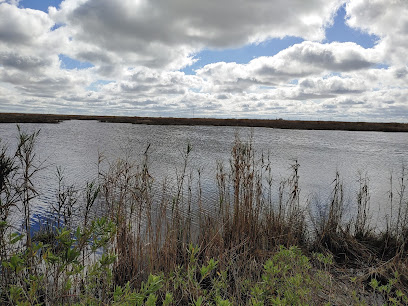
Bogue Chitto National Wildlife Refuge
Explore the breathtaking landscapes of Bogue Chitto National Wildlife Refuge, a premier destination for wildlife enthusiasts and nature lovers in Louisiana.

Cameron Prairie National Wildlife Refuge
Explore the serene beauty of Cameron Prairie National Wildlife Refuge, a top destination for wildlife lovers and outdoor adventurers in Louisiana.

Cameron Prairie National Wildlife Refuge
Explore the pristine wetlands of Cameron Prairie National Wildlife Refuge, where diverse wildlife and serene landscapes await in Louisiana's coastal prairie.

Sabine Pass Battleground State Historic Site
Discover the historical significance and natural beauty of Sabine Pass Battleground State Historic Site in Texas, where history meets outdoor adventure.

Markets, malls and hidden boutiques
Love's Travel Stop
Discover the convenience and comfort of Love's Travel Stop in Vinton, LA, your go-to destination for fuel, food, and travel essentials.

Books-A-Million
Discover an extensive collection of books, collectibles, and unique gifts at Books-A-Million in Lake Charles, Louisiana.
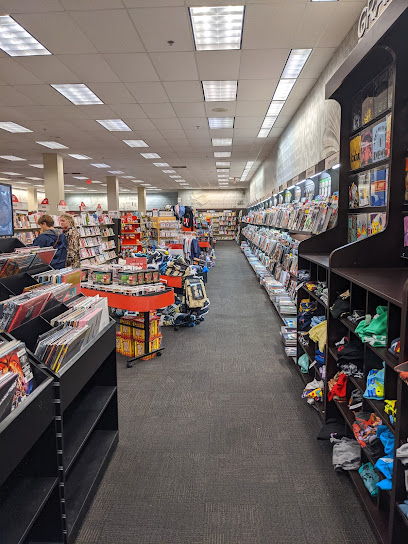
Sabine National Wildlife Refuge
Discover the diverse ecosystems and abundant wildlife at Sabine National Wildlife Refuge, a haven for nature lovers in Louisiana's coastal wetlands.

Cameron Prairie National Wildlife Refuge
Explore Cameron Prairie National Wildlife Refuge, a serene haven for wildlife enthusiasts and nature lovers in the heart of Louisiana’s wetlands.

Lacassine National Wildlife Refuge
Explore the breathtaking Lacassine National Wildlife Refuge, a haven for wildlife enthusiasts and a picturesque escape into Louisiana's natural beauty.
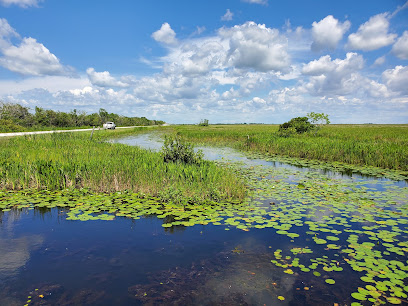
S&M Family Outlet
Shop at S&M Family Outlet in Lake Charles for unbeatable deals on children's clothing, home goods, and unique gifts for the whole family.

Flock of Five Gift and Art Emporium, LLC
Explore Flock of Five Gift and Art Emporium, a treasure trove of antiques, handcrafted gifts, and local art in Sulphur, Louisiana.

Susan's General Store
Discover unique souvenirs and local crafts at Susan's General Store, a charming gift shop in Hammond, Louisiana, perfect for travelers seeking special keepsakes.

Sabine Woods Sanctuary, Texas Ornithological Society
Explore the serene beauty of Sabine Woods Sanctuary, a wildlife refuge perfect for birdwatching and immersing in nature's tranquility in Texas.

Blue Crab Recreation
Discover the peaceful charm of Blue Crab Recreation in Hackberry, Louisiana—your perfect fishing pier escape in the heart of nature.

Thrift & Gift Shop
Explore the Thrift & Gift Shop in Orange, TX – a treasure trove of unique secondhand items and vintage finds for every adventurer.

Expressions
Discover unique handcrafted gifts and local art at Expressions, the premier gift shop in Lake Charles, Louisiana, perfect for memorable souvenirs.
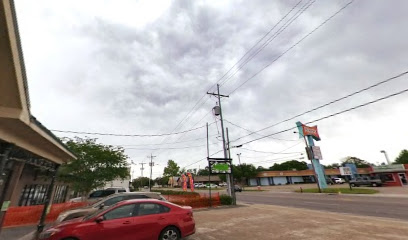
Texas Point National Wildlife Refuge
Explore Texas Point National Wildlife Refuge, a serene wildlife haven perfect for birdwatching, fishing, and embracing the beauty of nature along the Gulf Coast.

Snooper's Paradise Inc.- Fine European, Italian & French Antiques
Explore Snooper's Paradise Inc. for exquisite European antiques, unique gifts, and captivating art in Groves, Texas—a shopper's dream destination.

Almosta Ranch LLC
Discover family fun at Almosta Ranch LLC, where horseback riding, petting zoos, and peaceful lakes await in the heart of Louisiana.
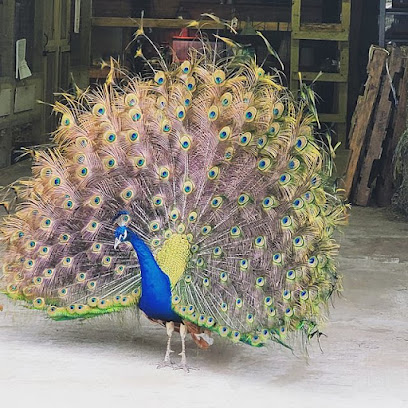
Essential bars & hidden hideouts
Bayou Beer Garden
Discover the vibrant spirit of New Orleans at Bayou Beer Garden, where craft beers and Southern flavors come together in a charming outdoor setting.

Frenier Landing Restaurant and Oyster Bar
Experience the best of Louisiana seafood with fresh flavors and stunning bayou views at Frenier Landing Restaurant and Oyster Bar.

Rivershack Tavern
Discover Rivershack Tavern: A lively bar and restaurant offering delicious Louisiana cuisine and live music in an unforgettable setting.

Barley Oak
Experience vibrant nightlife and local craft beers at Barley Oak, the premier bar on the scenic Lakeshore Drive in Mandeville, Louisiana.

Mona Lisa Bar and Grill
Discover the vibrant flavors of Louisiana at Mona Lisa Bar and Grill, where grilled delights meet a warm, welcoming atmosphere for an unforgettable dining experience.
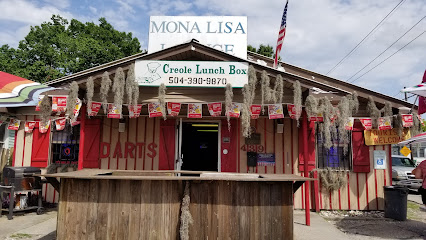
Anchors Up Grill
Discover the flavors of Louisiana at Anchors Up Grill, a seafood paradise in Cameron, offering fresh dishes and a cozy atmosphere.

Boopalu's Bar and Grill
Discover the vibrant flavors of Springfield at Boopalu's Bar and Grill, where grill favorites meet lively bar culture in a welcoming atmosphere.

Ember Grille & Wine Bar
Discover culinary excellence at Ember Grille & Wine Bar, Lake Charles' premier destination for steak lovers and wine enthusiasts.

MainStay Suites Hackberry Sportsman's Lodge
Discover Southern comfort and adventure at MainStay Suites Hackberry Sportsman's Lodge, where outdoor enthusiasts feel right at home.

Warsaw Marina & Bar, LLC
Discover the lively atmosphere and stunning views at Warsaw Marina & Bar, the perfect spot for relaxation and entertainment in Springfield.
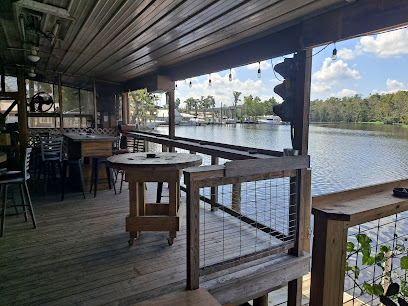
Spunky Monkey Daiquiris
Discover the vibrant atmosphere of Spunky Monkey Daiquiris, where delicious drinks and live music create an unforgettable Louisiana experience.
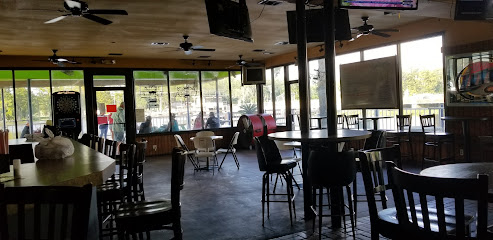
Bodega Wine Dive
Discover Bodega Wine Dive – a delightful wine bar in Lake Charles, Louisiana, offering an exquisite selection of wines and gourmet small plates.

Fred's Lounge
Discover Fred's Lounge: A vibrant bar in Lake Charles offering live music, friendly vibes, and unforgettable drinks in a lively atmosphere.

Mama G's
Discover the vibrant atmosphere and delicious Southern cuisine at Mama G's, the heart of Morgan City, where every visit feels like home.

Biere Bar
Discover the lively Biere Bar in Marrero, Louisiana, for an authentic local bar experience with great drinks and a welcoming atmosphere.

Local Phrases about Sabine National Wildlife Refuge
-
- HelloBonjour
[bon-zhoor] - GoodbyeAu revoir
[oh rev-wah] - YesOui
[wee] - NoNon
[nohn] - Please/You're welcomeS'il vous plaît / De rien
[seel voo pleh / deh ryehn] - Thank youMerci
[mehr-see] - Excuse me/SorryExcusez-moi / Désolé
[ex-kew-zay mwah / dey-zoh-lay] - How are you?Comment ça va?
[koh-mohn sah vah] - Fine. And you?Bien. Et toi?
[byen. ay twah] - Do you speak English?Parlez-vous anglais?
[par-lay voo ahn-glay] - I don't understandJe ne comprends pas
[zhuh nuh kohm-prahnd pah]
- HelloBonjour
-
- I'd like to see the menu, pleaseJe voudrais voir le menu, s'il vous plaît
[zhuh voo-dray vwahr luh men-yoo, seel voo pleh] - I don't eat meatJe ne mange pas de viande
[zhuh nuh mahnj pah duh vee-ahnd] - Cheers!Santé!
[sahn-tay] - I would like to pay, pleaseJe voudrais payer, s'il vous plaît
[zhuh voo-dray pay-ay, seel voo pleh]
- I'd like to see the menu, pleaseJe voudrais voir le menu, s'il vous plaît
-
- Help!Au secours!
[oh seh-coor] - Go away!Allez-vous en!
[ah-lay voo ahn] - Call the Police!Appelez la police!
[ah-pay-lay lah poh-lees] - Call a doctor!Appelez un médecin!
[ah-pay-lay uh may-deh-sahn] - I'm lostJe suis perdu
[zhuh swee pair-doo] - I'm illJe suis malade
[zhuh swee mah-lahd]
- Help!Au secours!
-
- I'd like to buy...Je voudrais acheter...
[zhuh voo-dray zah-shey...] - I'm just lookingJe regarde juste
[zhuh ruh-gard zhust] - How much is it?Combien ça coûte?
[kohm-byen sah koot] - That's too expensiveC'est trop cher
[say troh shair] - Can you lower the price?Pouvez-vous baisser le prix?
[poo-veh voo beh-say luh pree]
- I'd like to buy...Je voudrais acheter...
-
- What time is it?Quelle heure est-il?
[kel euhr ay-teel] - It's one o'clockIl est une heure
[eel ay uhn euhr] - Half past (10)Dix heures et demie
[dees euhr ay duh-mee] - MorningMatin
[mah-tahn] - AfternoonAprès-midi
[ah-pray me-dee] - EveningSoir
[swahr] - YesterdayHier
[yehr] - TodayAujourd'hui
[oh-zhoor-dwee] - TomorrowDemain
[duh-mahn] - 1Un
[uhn] - 2Deux
[duh] - 3Trois
[twah] - 4Quatre
[ka-truh] - 5Cinq
[sank] - 6Six
[sees] - 7Sept
[set] - 8Huit
[wheat] - 9Neuf
[nuhf] - 10Dix
[dees]
- What time is it?Quelle heure est-il?
-
- Where's a/the...?Où est...?
[oo ay...] - What's the address?Quelle est l'adresse?
[kel ay lah-dress] - Can you show me (on the map)?Pouvez-vous me montrer (sur la carte)?
[poo-veh voo muh mohn-tray (soor lah kart)] - When's the next (bus)?Quand est le prochain (bus)?
[kahn ay luh proh-shahn (bus)] - A ticket (to ....)Un billet (pour ....)
[uhn bee-yay (poor)]
- Where's a/the...?Où est...?
History of Sabine National Wildlife Refuge
-
Sabine National Wildlife Refuge was established in 1937 as a sanctuary for migratory birds and other wildlife. The refuge spans over 125,000 acres of diverse habitats including marshes, wetlands, and coastal prairies. Its creation was part of a broader effort during the early 20th century to protect critical habitats for migratory waterfowl and other species.
-
During World War II, the Sabine National Wildlife Refuge played a role in the war effort. The U.S. military utilized parts of the refuge for training exercises, including amphibious landings and other maneuvers critical for preparing troops for combat. The refuge's remote and varied terrain provided an ideal setting for these activities.
-
In 1957, Hurricane Audrey struck Louisiana with devastating force, causing significant damage to the Sabine National Wildlife Refuge. The hurricane's powerful storm surge inundated the refuge, leading to extensive flooding and habitat destruction. The aftermath of the hurricane required substantial recovery and restoration efforts to rebuild the affected areas.
-
Over the decades, coastal erosion has posed a significant threat to the Sabine National Wildlife Refuge. The loss of wetlands and marshes due to natural and human-induced factors has led to habitat degradation. Efforts to combat this include various restoration projects designed to rebuild and protect the refuge's vital ecosystems.
-
Since its establishment, the Sabine National Wildlife Refuge has been a crucial site for conservation research and wildlife management. The refuge supports a wide range of species, including migratory birds, alligators, and various fish species. Ongoing conservation initiatives focus on habitat preservation, species monitoring, and environmental education.
-
The Sabine National Wildlife Refuge holds cultural importance for the local communities and indigenous groups in the region. Historically, the area was used for fishing, hunting, and gathering by Native American tribes. Today, the refuge continues to be a site of cultural heritage and natural beauty, attracting visitors and researchers alike.
Sabine National Wildlife Refuge Essentials
-
Sabine National Wildlife Refuge is located in southwestern Louisiana, near the town of Hackberry. The nearest major airport is Lake Charles Regional Airport (LCH), approximately 30 miles away. From the airport, you can rent a car or take a taxi to the refuge. If you're driving, the refuge is accessible via Interstate 10 and Louisiana Highway 27. The journey from Lake Charles to the refuge typically takes around 45 minutes by car.
-
Transportation within the Sabine National Wildlife Refuge is primarily by car. There are several well-marked driving routes and parking areas available. Bicycles and walking are also great ways to explore certain parts of the refuge, although keep in mind some areas may be more distant and challenging to access on foot. There are no public transportation options within the refuge itself, so a personal vehicle is highly recommended.
-
The official currency in the United States is the US Dollar (USD). Most establishments in the nearby towns accept credit and debit cards, but it is advisable to carry some cash, especially for smaller vendors and entrance fees at the refuge. ATMs are available in the nearby town of Hackberry and in Lake Charles. Ensure you have enough cash before entering the refuge, as there are no ATMs within the park.
-
Sabine National Wildlife Refuge is generally a safe destination for tourists. However, it's important to take standard precautions. Be aware of wildlife and adhere to posted guidelines to avoid encounters with alligators and other potentially dangerous animals. Avoid isolated areas after dark and always inform someone of your travel plans if you are venturing into remote parts of the refuge. There are no specific high-crime areas targeting tourists, but always stay vigilant and aware of your surroundings.
-
In case of emergency, dial 911 for immediate assistance. Medical facilities are available in the nearby town of Hackberry and in Lake Charles. It is recommended to have travel insurance that covers medical emergencies. For minor health issues, there are pharmacies in Hackberry and Lake Charles where you can purchase over-the-counter medications. Familiarize yourself with the refuge's emergency protocols and locate the nearest ranger station for assistance.
-
Fashion: Do wear comfortable, weather-appropriate clothing and sturdy footwear suitable for hiking and outdoor activities. Avoid wearing heavy perfumes or scented lotions, as they can attract insects. Religion: There are no specific religious customs to observe in the refuge, but always respect the natural environment. Public Transport: There is no public transport within the refuge. Renting a car is essential. Greetings: Standard American customs apply; a simple 'hello' or handshake is sufficient. Eating & Drinking: Do pack out all trash and leftovers. Don't feed the wildlife, as it disrupts their natural behavior and diet.
-
For a local experience, consider visiting the refuge during off-peak times, such as weekdays or early mornings, to avoid crowds and see more wildlife. Bring binoculars and a camera for birdwatching and wildlife photography. Engage with local rangers; they are often knowledgeable and can provide insights into the best spots for wildlife viewing. Don't miss the Wetland Walkway, a boardwalk trail that provides an excellent opportunity to see a variety of wetland species up close. Pack a picnic and enjoy it at one of the designated picnic areas while taking in the natural beauty of the refuge.
Nearby Cities to Sabine National Wildlife Refuge
-
Things To Do in Lake Charles
-
Things To Do in Beaumont
-
Things To Do in Galveston
-
Things To Do in Lafayette
-
Things To Do in Houston
-
Things To Do in The Woodlands
-
Things To Do in Sugar Land
-
Things To Do in Baton Rouge
-
Things To Do in Houma
-
Things To Do in Natchez
-
Things To Do in College Station
-
Things To Do in Shreveport
-
Things To Do in Longview
-
Things To Do in Monroe
-
Things To Do in Tyler






